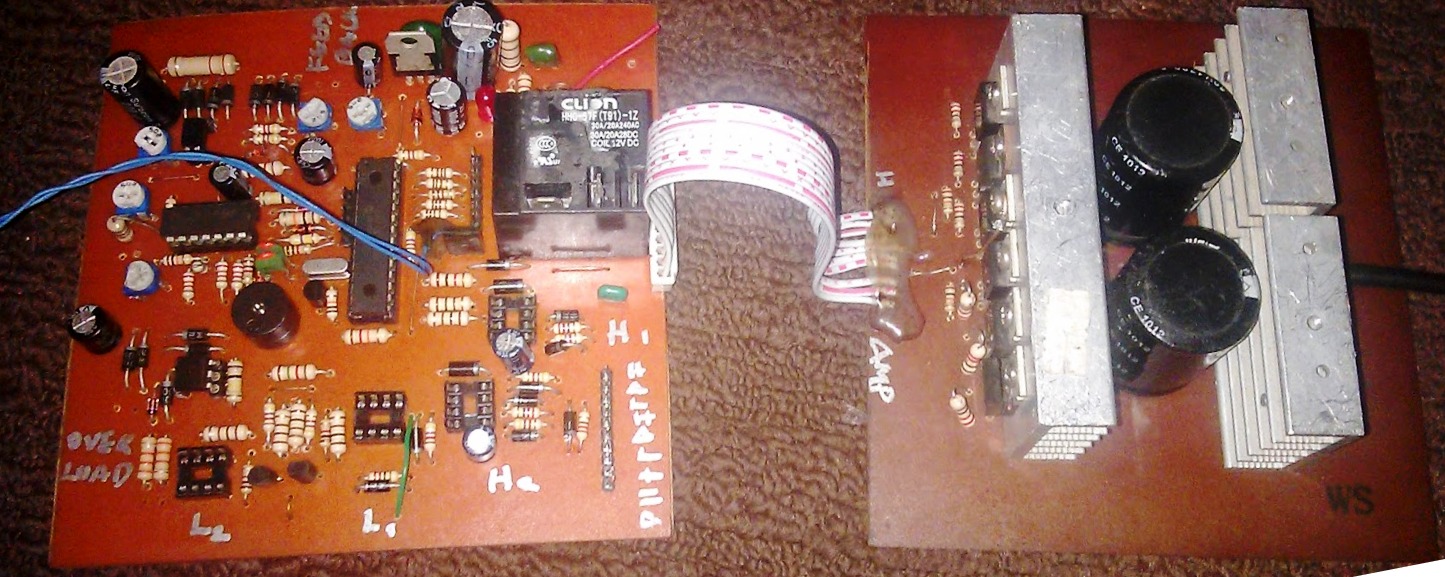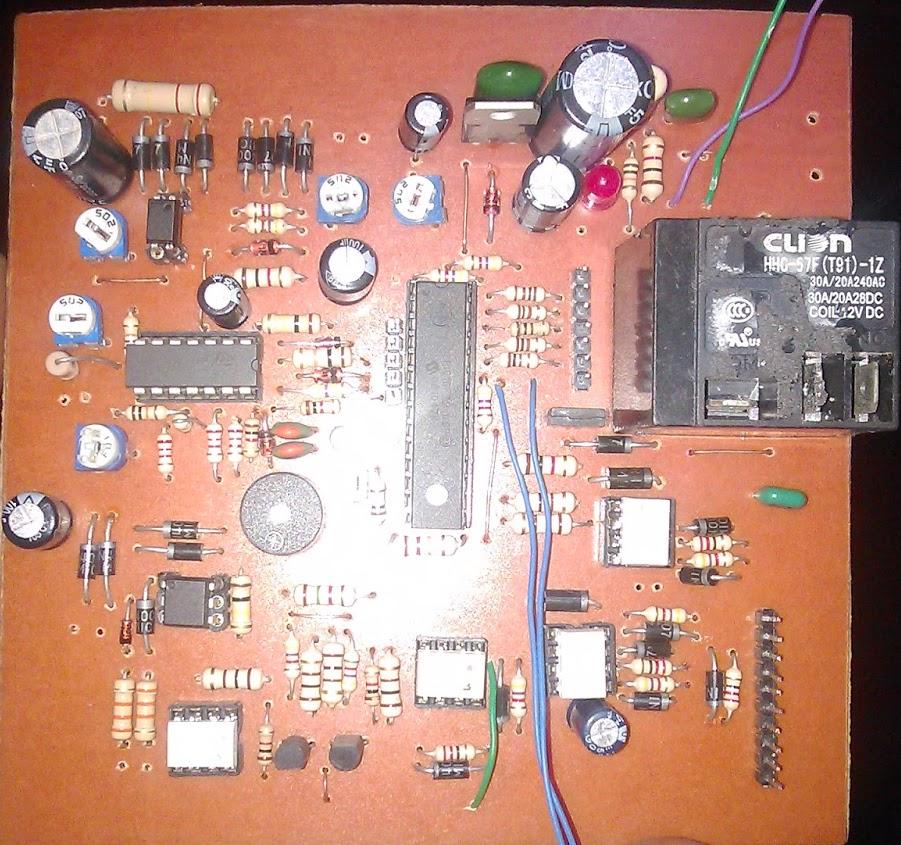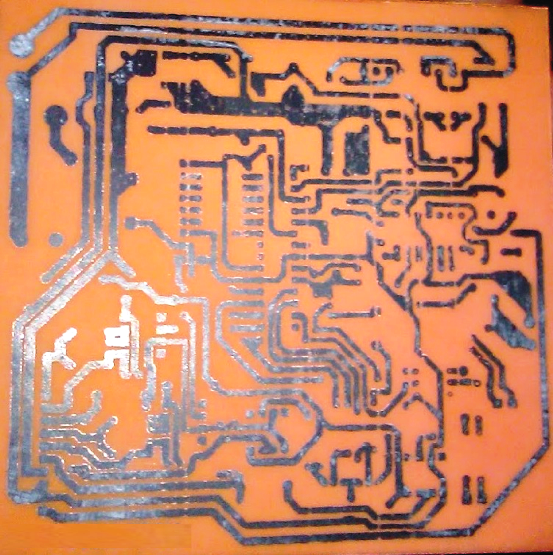The post details comprehensively regarding how to build a pure sinewave inverter circuit using microcontroller circuit with PIC16F72
The following image shows the complete circuit diagram of the sinewave inverter, the images are divided into two in order to fit inside the page, please join them together after printing the two images.


The following image shows the built prototype which tested using a 1200 watt load successfully

The close up of the mother board of the proposed sinewave inverter using PIC16F72 can be witnessed in the following image

This picture shows the PCB track layout for the proposed inverter design.

Hex files and PIC code along with PCB designs of this pure sine wave inverter circuit using PIC16F72 can be downloaded from the above shown links,.........Hope this helps!!
Hello, I want the design of DSP based true sine wave circuit design and PCB layout with programming files , let me know if available with you.
Hi BRaj, sorry it is not available to me right now…
can increase the output power of an inverter
yes, by increasing the transformer, MOSFET and battery power ratings
Thank you for your reply
Bro send link for pic 16 F 72
It is given in the article; you can download them.
yes please send it to me also…
let me try it….
This article is very helpful!
Thank you Aron, and Glad you found the post helpful!
Great post, thank you so much!
You are welcome!!
Hi, I’ve constructed the above sine wave inverter but found out the following defects;
1. The frequency measures 50hz
2. The output voltage is upto 300v on no load.
3. When loaded with ordinary 60w bulb the voltage dropped drastically to around 150v and it affects the frequency too.
4. The charging of the battery is too slow and I guess it’s just charging with trickle charging.
Please I need help in the above defects. Thanks.
Thanks for updating your results, Appreciate it.
The voltage drop is due to inadequate transformer current, battery current. Please upgrade these two so that they become capable of handling 200 watts or as desired by you.
Hi Sir,
I am interested in your Pure sine wave ups. I would like to buy your source codes and schematic. My phone and whatssap: +84979352988
Hi Hoang, no need to buy, you can access it free of cost from the above article
Hi admin can u provide me three phase inverter hex code please
Sorry don’t have it with at this moment of time…
What are the changes to make aside the transformer winding. Thanks!
Hi admin. Thanks for the good work. Please how do we modify the inverter to run on 24v battery supply.
Hi, use a 24V transformer and battery, and feed 12V from the 24V to the electronic oscillator circuits